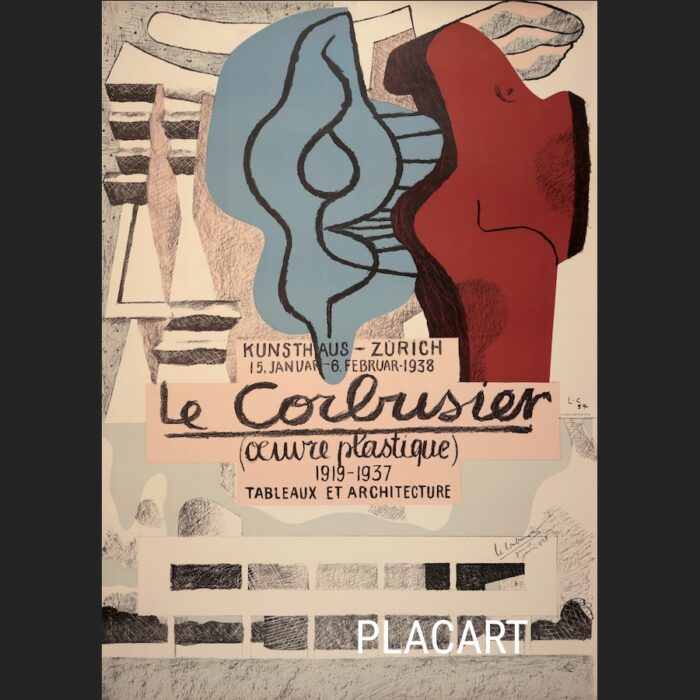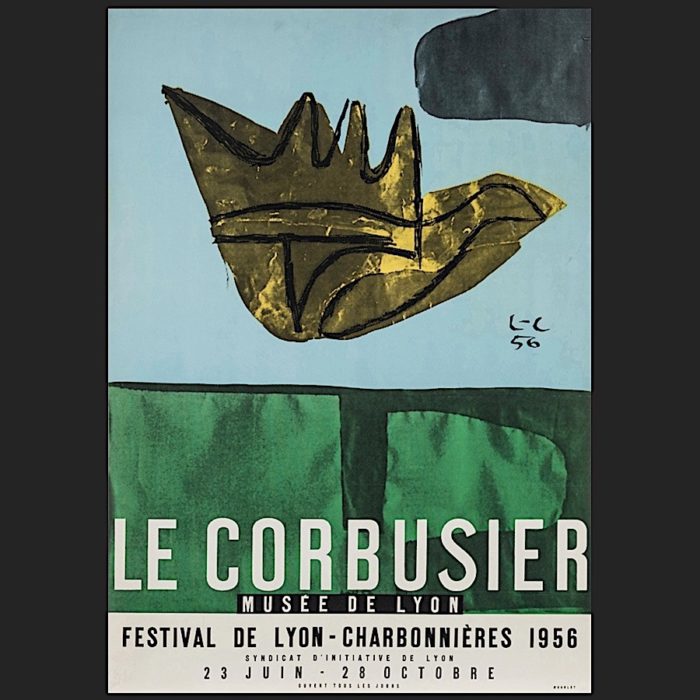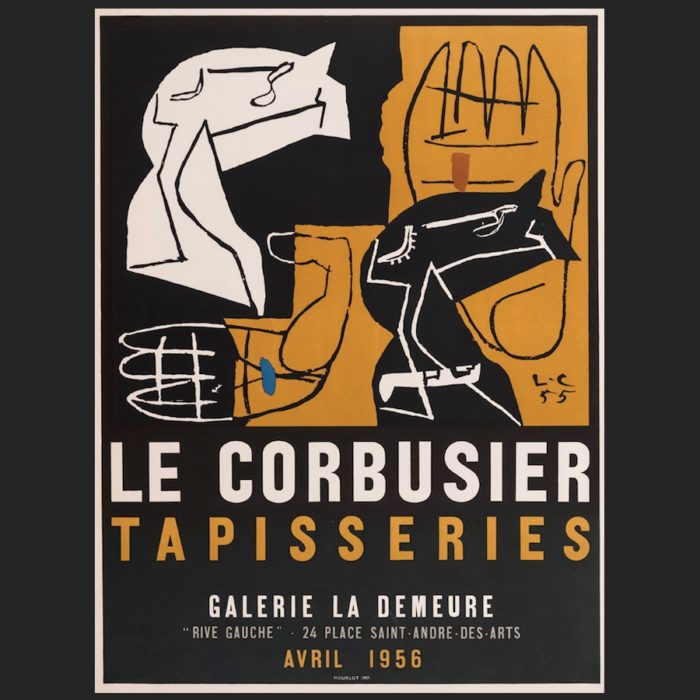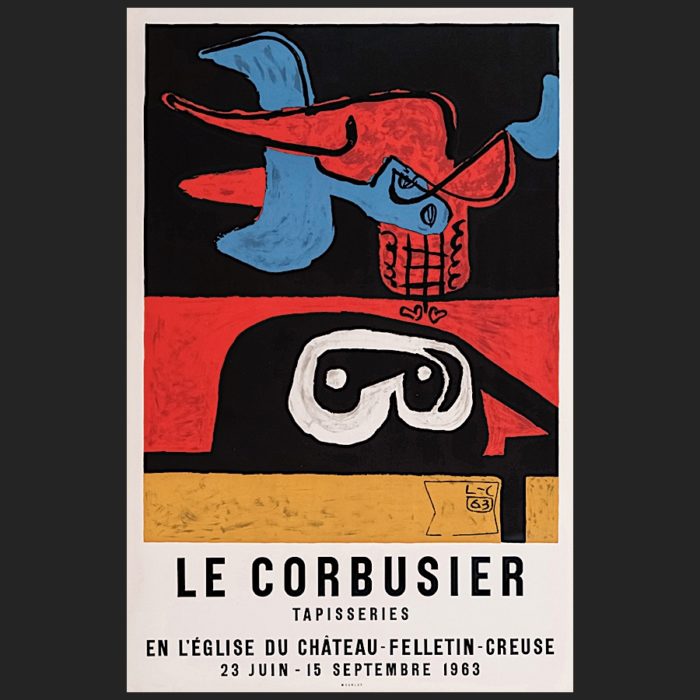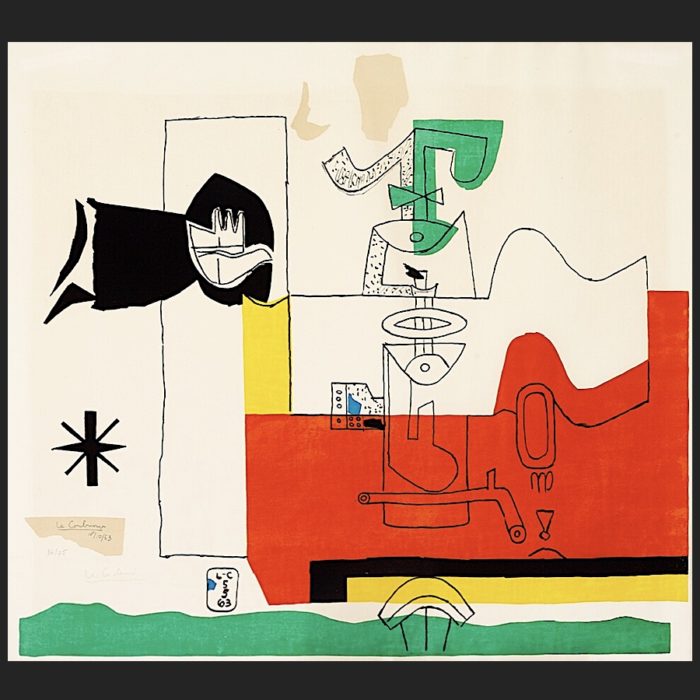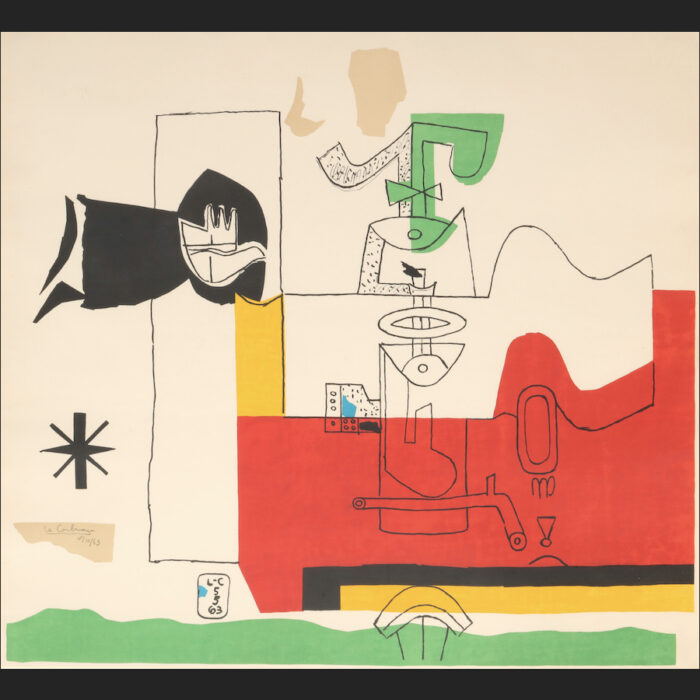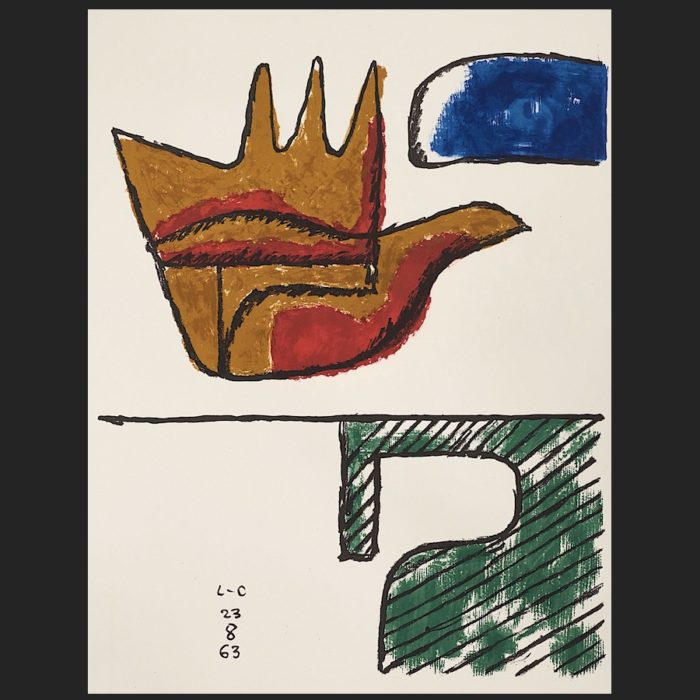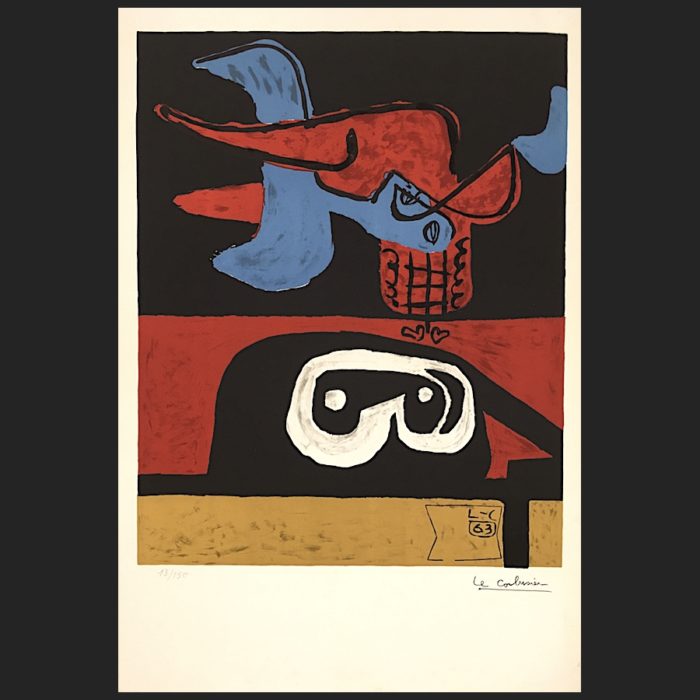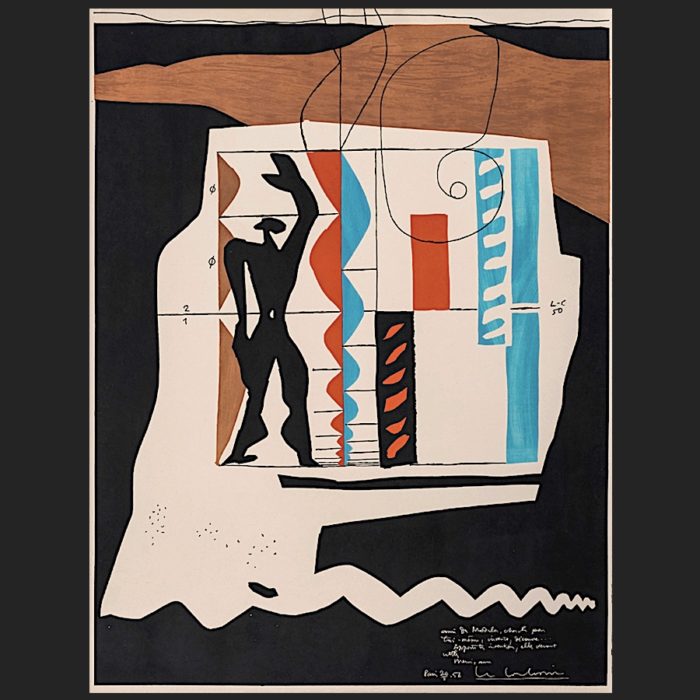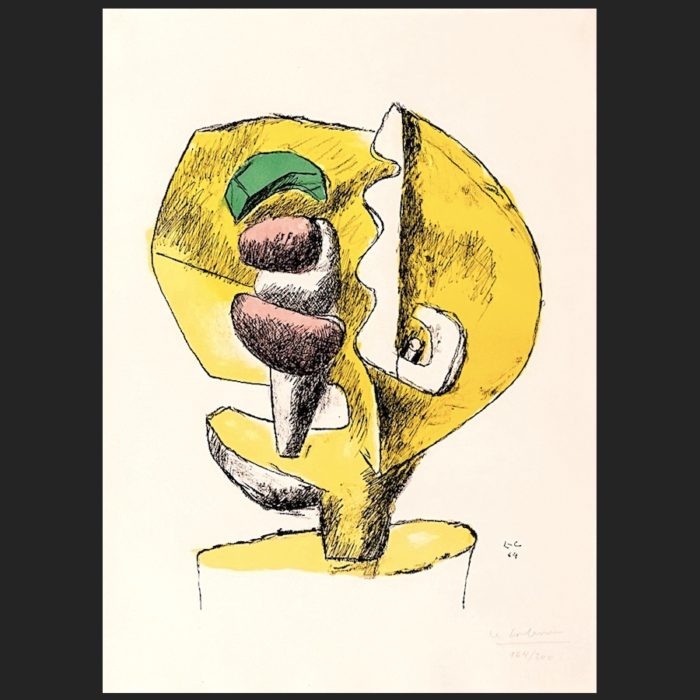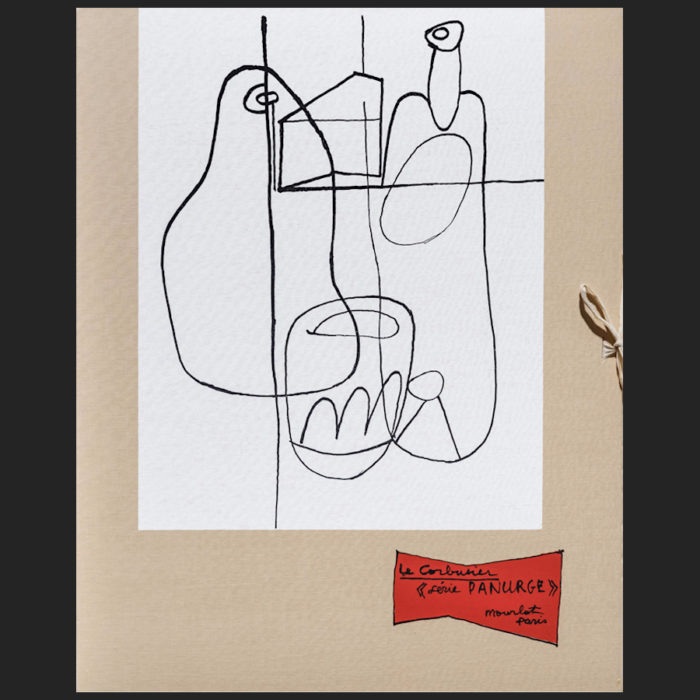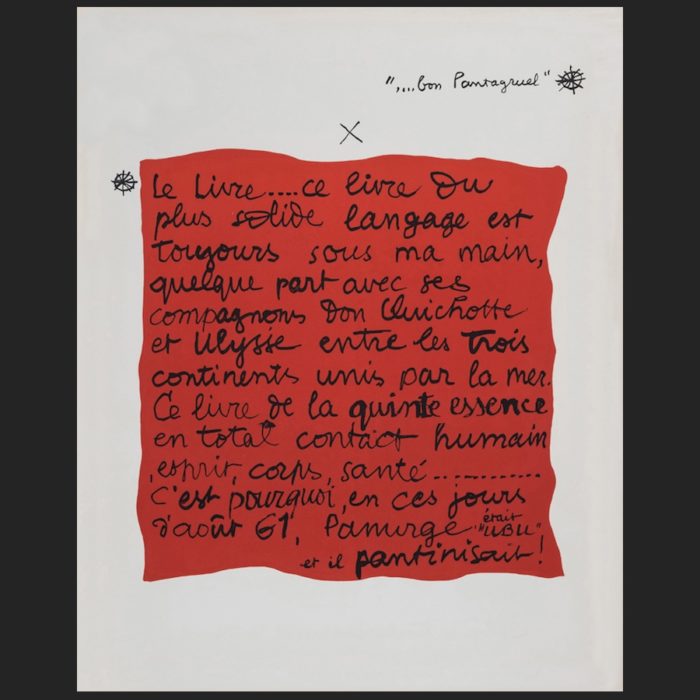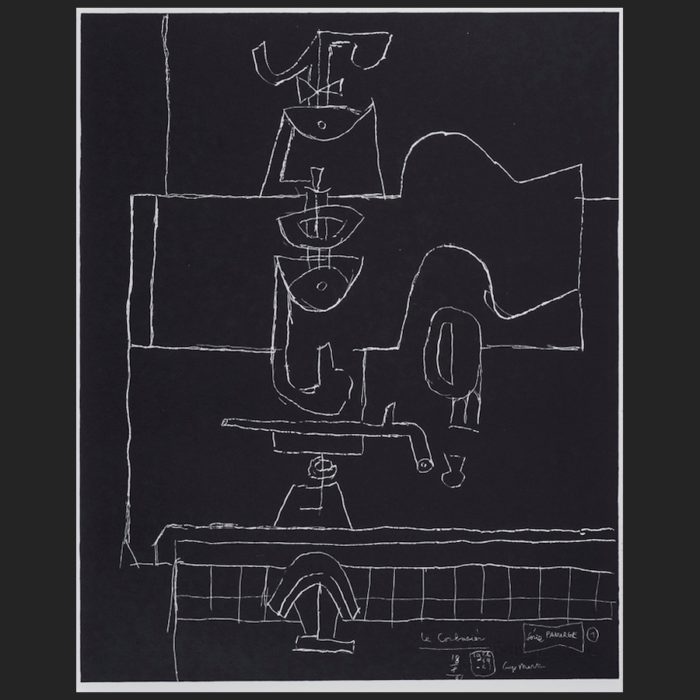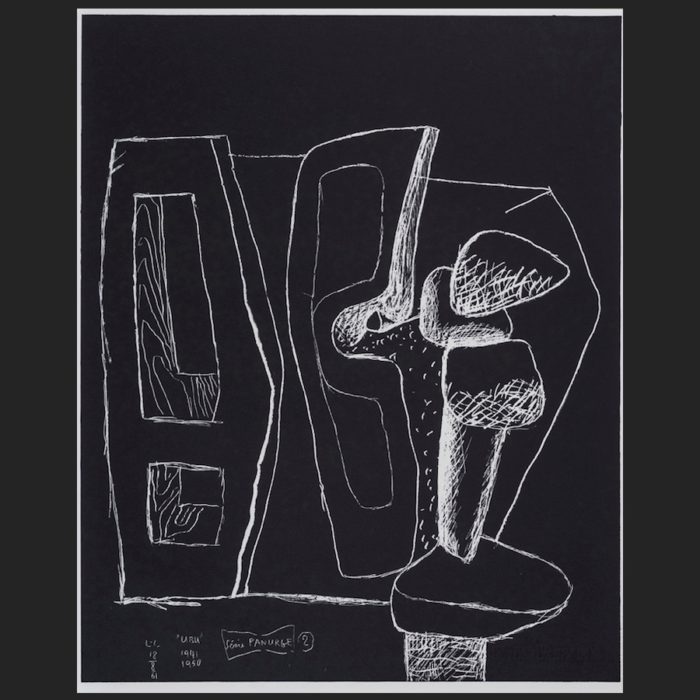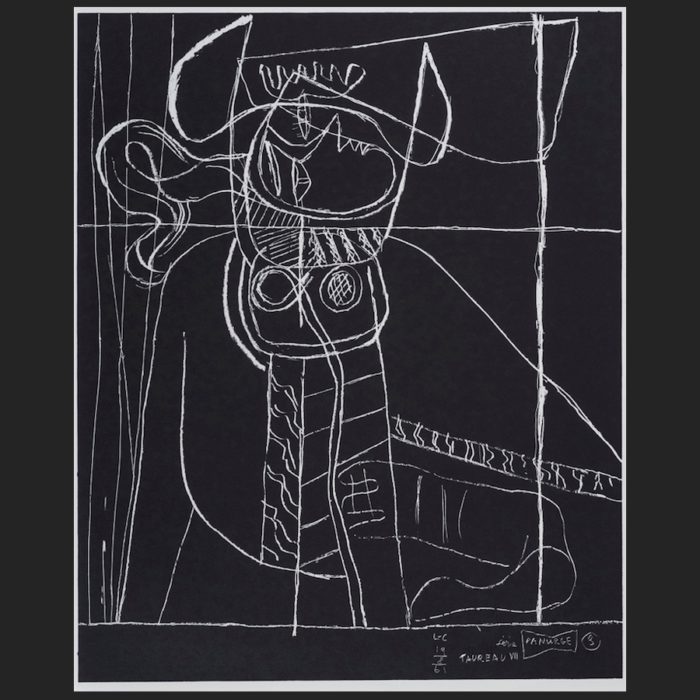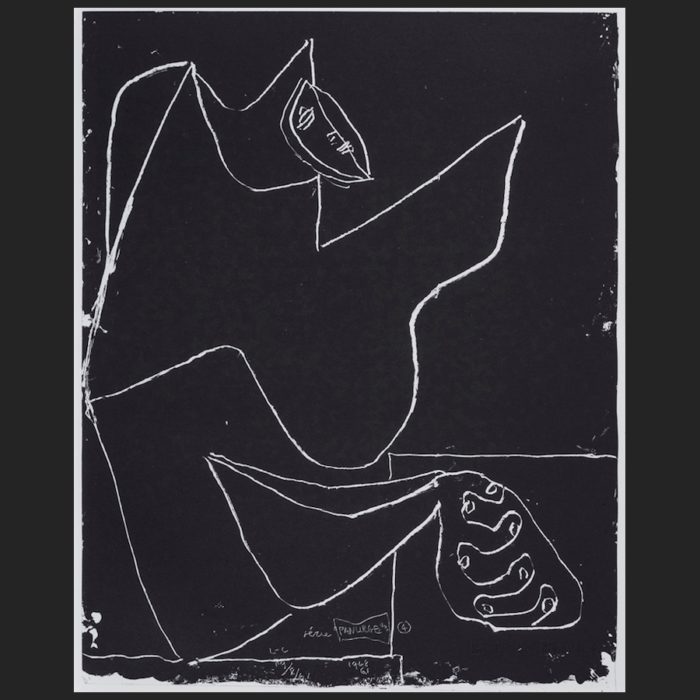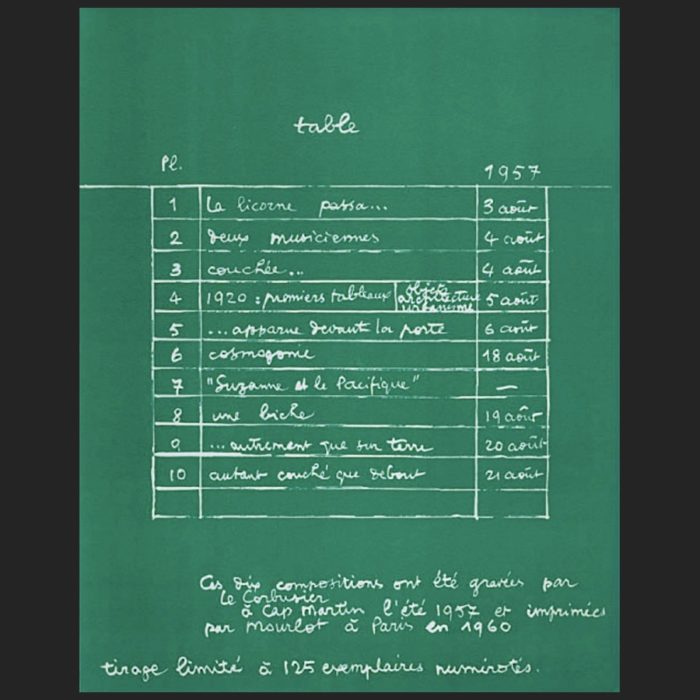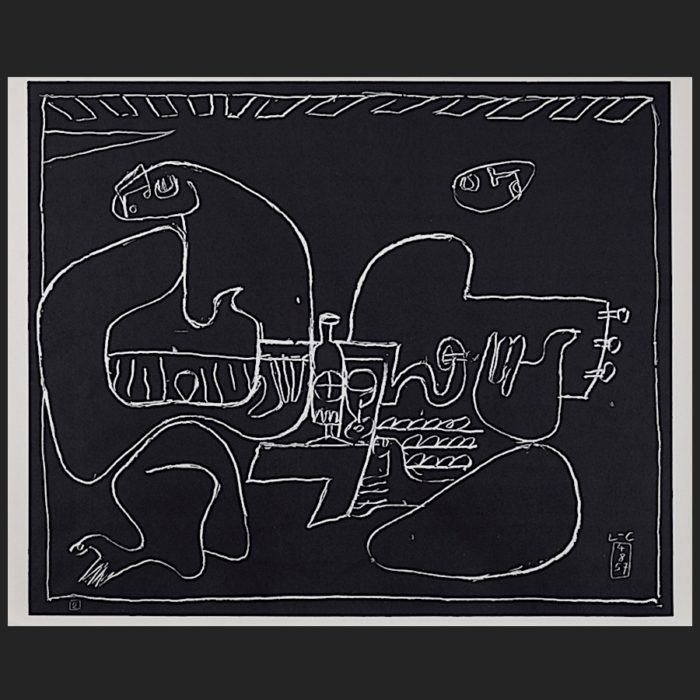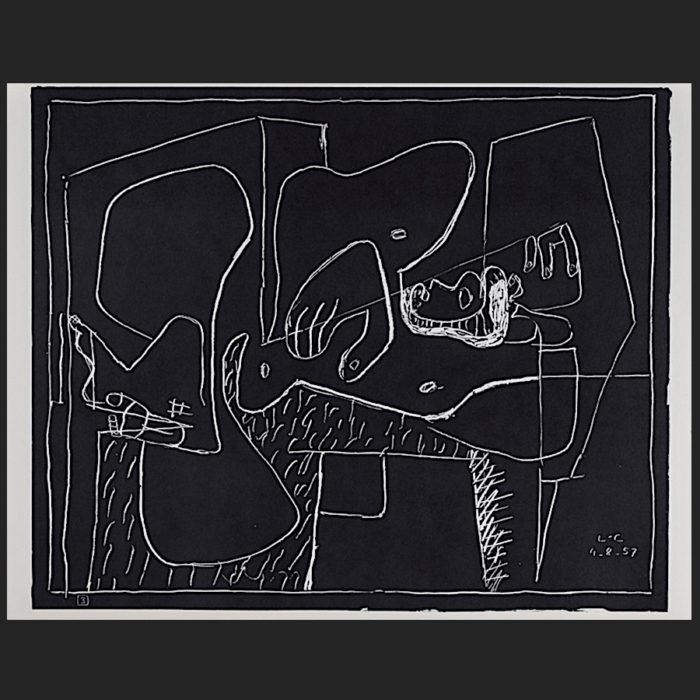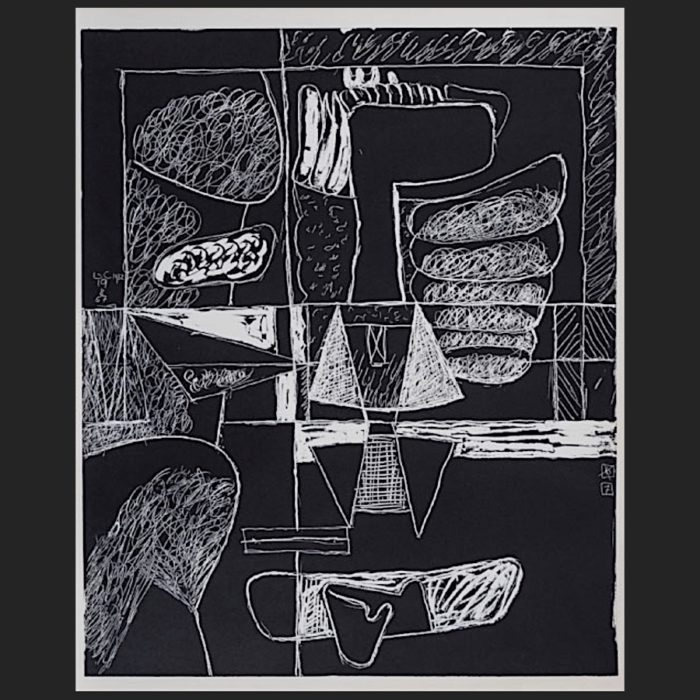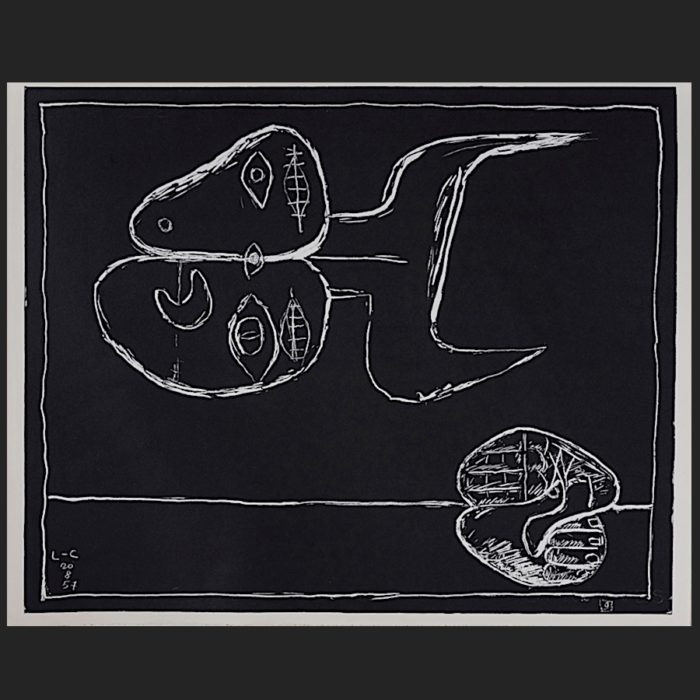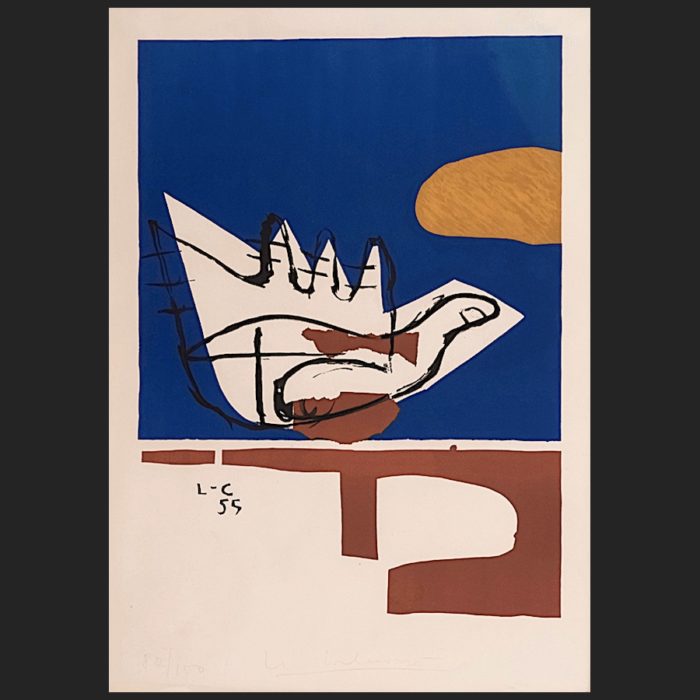By the end of the 1940s, Le Corbusier had produced, or rather had printed, about twenty works, the later ones in 1938 printed by the lithographer Fernand Mourlot. At this point, Tériade, the publisher of his “Le poéme de l’angle droit”, encouraged him to devote himself more to lithography. This reinforced LC in his determination to make his artistic work known to a broader public
The plan already started evolving in the course of World War II: in the course of the development of the Modulor, his system of proportions, LC recognized the didactic potential of correlating graphics. He was very much attracted to the idea of finding another medium, besides
his books and countless essays, through which to popularize his own ideas and convictions and at the same time to increase his visibility as an artist. Indeed, years later, with his sense of a mission, he wrote to Mourlot that graphics were “à disposition des gens intelligents et pauvres (!) qui seraient ravis de payer très bon marchè un mural de papier à punaiser sur leurs murs”.
At the end of the 1950s, he became acquainted with Heidi Weber, a native of Basel living in Zurich. Impressed by his artistic work, Weber worked on making his artistic oeuvre more widely known, and also attended to having further editions of his works printed as well as to the printing of new graphics.




